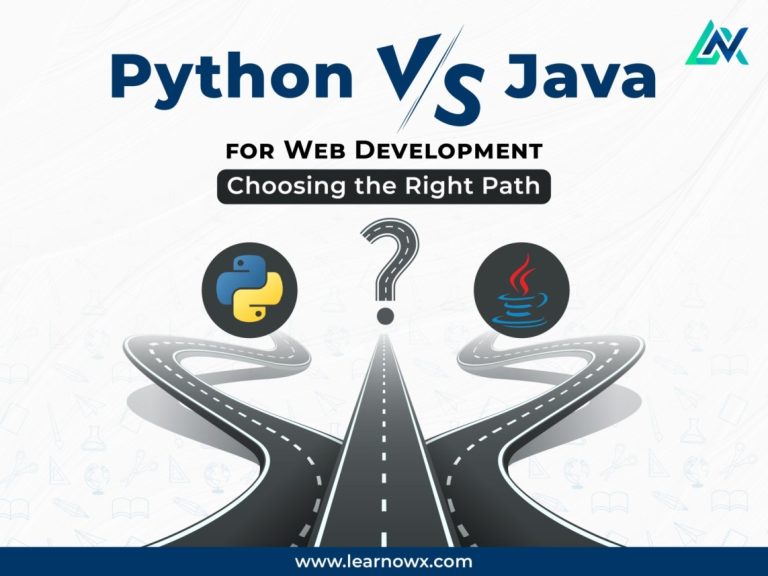Sharing is caring!
Front-End vs Back-End: Why do we need to know?
Web Development is a must know knowledge and comprises of Front end and Back end components. So we need to understand Front-End vs Back-End technologies.
Google search returns numerous eye-catching results. Sometimes it seems amazing how quickly we can achieve fantastic results. Websites are platforms that display these outstanding results.
Thus web development is the process of designing, developing, and managing these websites.
Introduction into web development
Web development, also called website development, is one of the crucial parts of the IT industry that has networked the world and is responsible for improving the relationships between a consumer and a provider.
Websites help in making complicated tasks automated via their multi-functionality features.
For a better understanding, this blog will give you relevant information about front-end and back-end development, their features, and the main differences between these two technologies.
Overview: Front-end Development
As the name suggests, front-end development works at the front. It focuses on the visual aspects of a website, the section that users look at, experience, and interact with popularly known as the User-Interface.
From text and colors to buttons, images, navigation menus, etc., it involves everything a user could encounter directly, thus, bringing functionality to website. Therefore, a front-end developer is someone who works on the front end.
To rephrase it, a front-end developer constructs the user experience on the website or web page which is essential to web development. They are responsible for bringing the Web Designers’ designs to life and creating website structures using frontend development languages like HTML, CSS, and Javascript.
Thus, standalone desktop applications have transformed into web-based applications.
Features of Front end
Client-side rendering: With the help of client-side rendering, you can deliver the entire website on the browser via Javascript.
Optimization: To ensure fast loading of the websites for the user and increase the occurrence, smooth tuning of HTML, CSS, and JavaScript is a must.
Overview: Back-end Development
Back-end development or server-side rendering acts similar to a film crew who work behind the scenes in making a movie.
Thus the back-end developer connects each front-end feature to the behind-the-scenes processing data and performing actions in response to the activities on the website including data storage, security, and other things.
A good understanding of back-end languages (Python, Java, Ruby, and more), Database Management Systems (DMS), Application Program Interfaces (API), and Servers like Apache and Microsoft IIS is necessary for a back-end developer.
An example
When you shop online the products you see displayed along with the option to buy or save in your cart and when you buy to help you checkout by displaying the relevant messages and activities.
Well, the front-end developer is behind this process and in contrast, the back-end developer manages the purchase authorization, putting your products in the cart, payment confirmation, storing the mailing address, tracking your order etc.
To assist in the above activities the back end keeps the information in the database and reflects it when the customer checks the data through the front end.
Front-end vs. back-end development systems are therefore specialised with a number of components that will be further discussed in this article.
Features of Back end
Website Architecture: This feature of the back-end system helps in understanding the objectives of website creation.
API: With the help of Application Program Interface (API) tools, you can build strong communication and convey messages between machines. Therefore, it delivers important data.
Databases: Databases are the hub responsible for storing the data of the client.
Scripting: The back-end scripts provide the fundamental structure and are executed on a web server. They take care of things like appropriate formatting and producing dynamic web pages. As a result, it gives the user a unique experience.
The Differences: Front-End vs Back-End
Front end refers to the user-interactive section of websites and applications.
While discussing front-end programming, the client can see it and the user can connect.
A front-end developer must assist in retrieving stored data and presenting it in a way that is clear to front-end users in addition to improving the design of the website.
Although, front-end development requires the support of the backend and cannot work alone, the front-end development can operate independently in exceptional cases, such as with static websites.
Front-end development requires knowledge of HTML, CSS, SASS, JavaScript, etc.
In contrast, the back end of websites is invisible to users and functions to maintain the effectiveness of the front end, or user interaction.
Back end development, on the other hand, refers to programming carried out on the server side, which is the side that only developers can see.
The backend gathers and stores the information obtained from front-end user interaction and websites is invisible to users and functions to maintain the effectiveness of the front end, or user interaction.
Back-end development can manage front-end and back-end work independently.
Whereas, for Back-end development, one must be proficient in at least one of the languages, such as Python, Ruby, Java, PHP etc.
Conclusion
By now, the role and the features of front-end and back-end development are more obvious, including the difference between these technologies.
Back-end development can be thought of as the internal workings of the website, which cannot be seen but is experienced and is very important. Front-end development is the visible face of the website.
Therefore, many businesses have potential developers who are knowledgeable about both the front-end and back-end development processes, as well as the interactions between them. They are referred to as full-stack developers, who maintain the front-end and back-end development work function smoothly and efficiently.
Bottom Line
Thus, full stack development is the development of both technologies, i.e., front-end and back-end development and the communication in-between.
If you are looking for an opportunity to become an expert in both these technologies and how they interact with each other, ie Full Stack Development then LearNowX is the suitable platform for you. Our trainers are here to help you to utilize your skills and knowledge in the best possible ways.







